4 Exercise Tricks That Fight Aging, Science Says
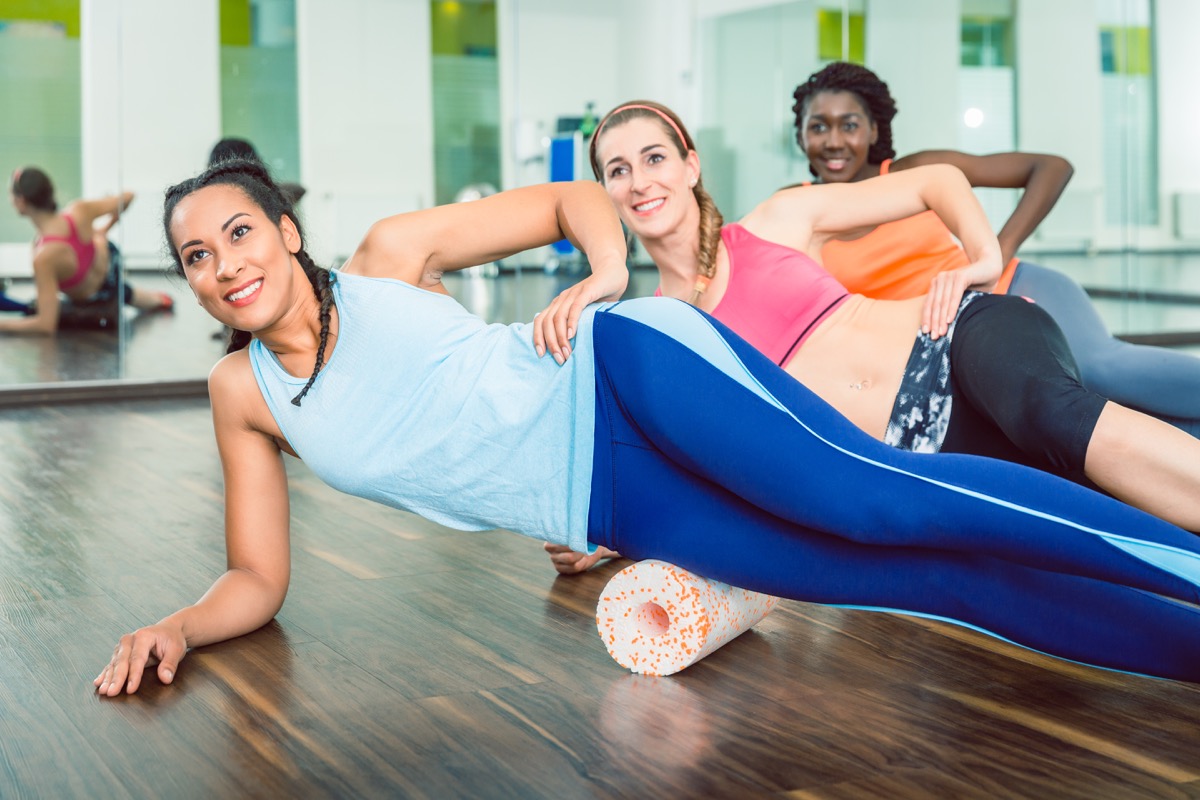
When it comes to slowing the aging process and staying healthy your whole life, mindset is just as important as anything else. One study published in Frontiers in Aging Neuroscience even concludes that feeling younger than your real age may be a sign that your brain is actually aging slower!
Indeed, the first step to healthy aging is believing you can continue to feel young no matter the date on your driver's license. Besides, who says getting old has to mean slowing down? One set of research published in Journal of Medical Internet Research reports older adults have been working out more than any other age group during the pandemic.
On a related note, when it comes to delaying or reversing aging, there are no magic shortcuts. Exercising consistently is the best way to fight father time. Plenty of research tells us that exercise can help keep the brain young, while other surprising studies even suggest a cardio habit can keep your skin glowing. We may not be able to totally stop the hands of time, but exercise allows us to at least delay them a little while.
Luckily, there are a number of simple ways to incorporate more exercise into your life in order to reap its youth-sustaining benefits. Read on to learn about some exercise tricks that promote longevity and help fight aging! And next, don't miss Secret Exercise Tricks for Reshaping Your Body After 40, Trainer Says.
Fit in some "exercise snacks"
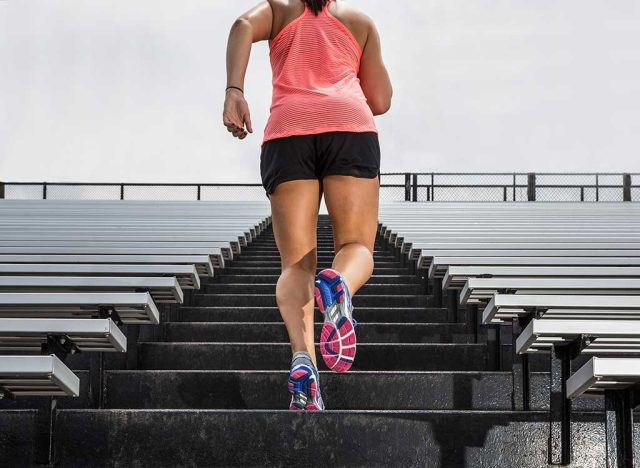
Don't have time for a full workout very often? No problem, just indulge in a few "fitness snacks" throughout your day instead.
This study published in Applied Physiology, Nutrition and Metabolism reports that simply sprinting up three flights of stairs three times per day was enough to notably boost health markers associated with both improved cardiovascular health and overall longevity among a group of otherwise sedentary adults.
"The findings make it even easier for people to incorporate 'exercise snacks' into their day," says senior study author Martin Gibala, a professor of kinesiology at McMaster University. "Those who work in office towers or live in apartment buildings can vigorously climb a few flights of stairs in the morning, at lunch, and in the evening and know they are getting an effective workout."
Moreover, stair-climbing participants were also stronger and capable of generating more power during a cycling task than a control group. This suggests just a few sprints up your staircase per day can also help slow age-related loss of muscle mass and strength.
Related: Follow This Weekly Workout Plan to Stay Lean Throughout the Holidays
Jog for this long
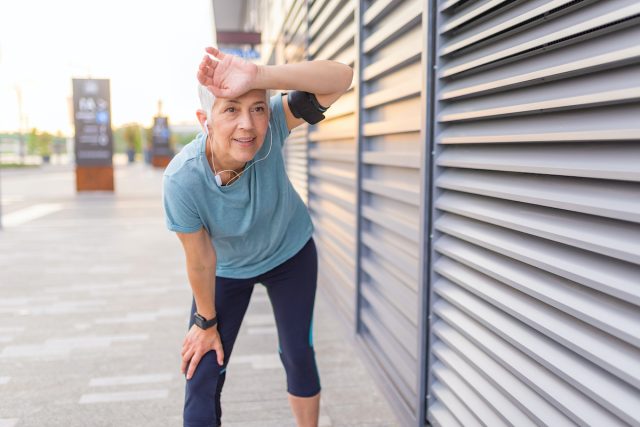
If you still have any doubt that exercise can slow aging, look no further than this research published in Preventive Medicine. Researchers discovered that "highly active" individuals are literally younger on a cellular level than their sedentary peers of the same age.
As your body's cells age, they continually replicate themselves. Each time that occurs, the cell's telomeres, which can be found at the end of our chromosomes, become just a little bit shorter. In simpler terms, younger people's cells have longer telomeres. Well, this study discovered that people who exercise often have much longer telomeres than they should for their age.
Study authors advise a man can achieve a "highly active" lifestyle by jogging roughly 40 minutes per day five days per week, while women should follow a slightly lighter schedule of 30-minute jogs at the same weekly frequency. All in all, highly active individuals were found to have a biological clock nine years younger than sedentary people and seven years younger than even moderately active individuals.
"Just because you're 40 doesn't mean you're 40-years-old biologically," comments Larry Tucker, a professor of exercise science at BYU. "We all know people that seem younger than their actual age. The more physically active we are, the less biological aging takes place in our bodies."
Related: Sign up for our newsletter for the latest health and fitness news!
Walk briskly
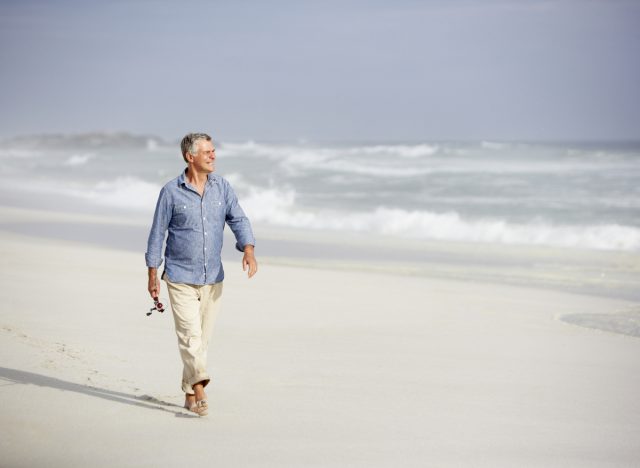
A walk can keep you feeling great and living longer too, as long as you add just a little pep to your step. This study released in the scientific journal Mayo Clinic Proceedings notes that people who tend to walk at a faster pace usually end up living longer, more functional lives. Interestingly, these findings even held up regardless of personal BMI. In summation, maintaining a usual walking pace of about 100 steps per minute, or 3 miles per hour, may be all you need to start feeling younger and healthier.
An astounding 450,000 people were assessed for this project. On average, men who walked at a fast pace lived to around 86 years old while their slow-walking counterparts passed away at a median age of 65. Similarly, brisk walking females lived to 87 years old and slower-paced women passed away on average at the age of 72.
"Our findings could help clarify the relative importance of physical fitness compared to body weight on life expectancy of individuals," explains lead study author Tom Yates, Ph.D., MSc, BSc, a professor of physical activity, sedentary behavior and health at the University of Leicester. "In other words, the findings suggest that perhaps physical fitness is a better indicator of life expectancy than body mass index (BMI), and that encouraging the population to engage in brisk walking may add years to their lives."
Related: This 25-Minute Walking Workout Will Get You Toned
Add a furry exercise partner
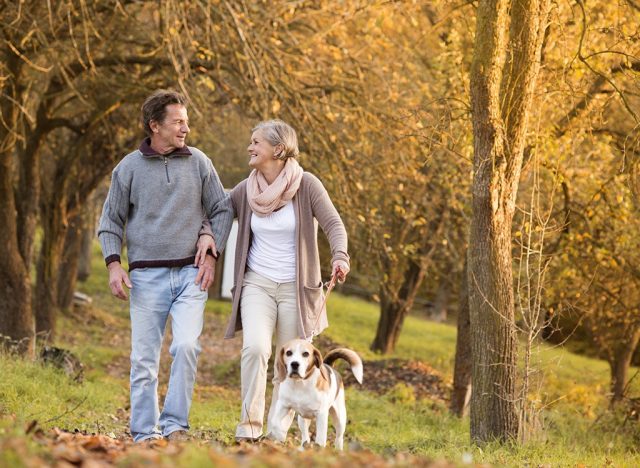
Adding a new pup to your home can keep you feeling young, healthy, and refreshed in a variety of ways. To start, owning a dog is associated with a longer lifespan. This study published in Scientific Reports reports dog owners were 33% less likely to pass away over a 12-year period.
"We know that dog owners, in general, have a higher level of physical activity, which could be one explanation for the observed results," explains senior study author Tove Fall. "Other explanations include an increased well-being and social contacts or effects of the dog on the bacterial microbiome in the owner."
As touched on above, dogs need a whole lot of exercise, which means you'll have to keep up! In this way, you can trick yourself into exercising without even realizing it.
Bringing a new dog into your life virtually guarantees you'll be spending more time outside in an active manner. This study, released in the Journal of Epidemiology and Community Health, analyzed over 3,000 people before concluding dog owners lead more active lifestyles across all four seasons.
"We were amazed to find that dog walkers were on average more physically active and spent less time sitting on the coldest, wettest and darkest days than non-dog owners were on long, sunny, and warm summer days," notes study leader Andy Jones, a professor from the University of East Anglia.
For more, check out 5 Major Secrets to Getting a Lean Body for Good, Experts Say.








